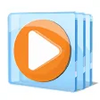Windows-based solution designed to give you a central place to play both music and videos
Windows-based solution designed to give you a central place to play both music and videos
Vote: (9,550 votes)
Program license: Free
Developer: Microsoft Corporation
Version: 12.0.22621.457
Works under: Windows
Vote:
Program license
(9,550 votes)
Free
Developer
Version
Microsoft Corporation
12.0.22621.457
Works under:
Windows
Pros
- Simple to use but powerful
- Wide range of features and support
Cons
- Music store lacks modern features
Windows Media Player is a powerful media player and media library for the Windows ecosystem.
Windows media player—often called WMP for short—is a media player and a media storage solution for the Windows ecosystem. WMP not only provides the tools needed to consume media but to acquire, format, collect, organize, search it and so forth. If you have multiple devices that use a Windows platform, then you can synchronize your collection across all of them. For advanced users, WMP even plays nice with many of the popular alternatives, including those designed by Microsoft’s chief competitors. Another noteworthy aspect of WMP is that while many other media players have dropped legacy features, the WMP team not only continues to support them but to refine them.
The WMP program has been around a long time. Microsoft first introduced it in 1991 with the release of Windows 3.0 with Multimedia Extensions. It was originally included with the Windows installation. Later, it would become optional, and you could opt to install it from disc, download it from Microsoft or acquire it from other sources. WMP has always supported all of versions of Windows that were currently supported at the time of its next major release. As we write this, version 12 has been released, and this version supports Windows 10, 8.1, Mobile and so forth. If you are using Windows 7, for instance, you can download the latest WMP version released during the Windows 7 lifecycle.
Bushnell’s Law is an aphorism concerning video games: easy to learn, hard to master. But we think the principle applies to any software consumed by the average user, and this is something that WMP has generally done very well and through which it has managed to distinguish itself. If the casual user wants to play a video, a song or an entire album, doing so is rather simple and intuitive. It just works. However, underneath that apparent simplicity is a sophisticated and robust media toolbox. Advanced users can do a lot with it, including personalizing it to their particular needs and even adding features to it.
WMP supports just about any type of media that you consume on your computer, smartphone, tablet and other devices. It supports practically any image format, and you can even use WMP as a tool to collect, organize and show off your picture collection. The program plays audio and video—either together or alone—and the latest version has really expanded support for audio formats, video formats and video container formats. All major formats that we tested were supported, including 3GP, AAC, AVCHD, AVI, DivX, MPEG-4, MOV, WMV, WMA and Xvid. The WMP team has also expanded support for streaming sources, and it even outperforms alternatives like VLC on that front now.
This program has always been expandable, but the latest version has improved base capabilities and your options extensively. Microsoft has greatly expanded out-of-the-box support for file formats and codecs. This is a great help to casual users who are less likely to encounter problems. It is also nice touch for advanced users who are less likely to need to fiddle under the hood. If you want to fiddle, however, you can. You can add codecs as well as swap in codec alternatives, and you can adjust codec settings at a granular level in a way that would not be possible through the base WMP user interface.
If you want a full-blown media library, WMP will serve you well in this regard too. In fact, WMP may be one of the best libraries when it comes to collecting different types of media in a single collection. Not only can you build and maintain a library, but the WMP team provides many options so that you can structure and visualize it in a way that works best for you. Visualization is a big emphasis with the latest version. Gone is the very minimalistic database approach, and in its place are graphical items that you can interact with. Making playlists is easier than ever, and the search tool is even more powerful.
The synchronization mechanisms and toolbox have also been expanded with the latest version, and while it might not yet be on par with iTunes, it is getting there. An advantage WMP has over iTunes is that if you do have an Android, Amazon Alexa or Apple devices, it simplifies what can otherwise be complex synchronization scenarios. WMP does support more advanced synchronization setups as well, and we were impressed with what was possible as we started to dig in to the options.
Earlier, we mentioned legacy features. A great example of this is the CD burner built into WMP. CDs are going the way of the Dodo as more people use MP3s and stream their music from the Cloud and various streaming sources. But if you are someone who still enjoys making CD-based “mix tapes,” you will love this feature. It is free, after all, and one of the most feature-rich and refined burners around.
Microsoft has also overhauled the user interface. When WMP was first released, it looked like any other Windows 3.0 window, which perhaps was not the best way to interface with media. They continued to improve it over time but continued to value function and minimalism above all else. It is worth noting that many people prefer that approach, and popular apps like VLC are designed that way as well. But this latest version has a beautiful graphical UI with oversized buttons—that look great on televisions and smartphones—and many customization options. It also supports themes, and many are included with the install, and if you really prefer the older minimalistic style, that is an option as well.
WMP has always had a passable Help feature. This now features a wide range of useful tutorials. Online resources are probably your best option for advanced topics, but these tutorials serve as good starting point and help casual users from getting stuck. WMP now supports the most popular online music services—both free and paid—and there is, for instance, an excellent tutorial to get that set up.
There are no major issues with the latest WMP release. The most notable problem we experienced related to incorrect metadata, which is a bug likely to be corrected in an upcoming patch. Two notable omissions are a lack of podcast support and no real music store. The lack of podcast support is just odd, and while there is technically a music shop, we doubt many will want to use it.
Pros
- Simple to use but powerful
- Wide range of features and support
Cons
- Music store lacks modern features




